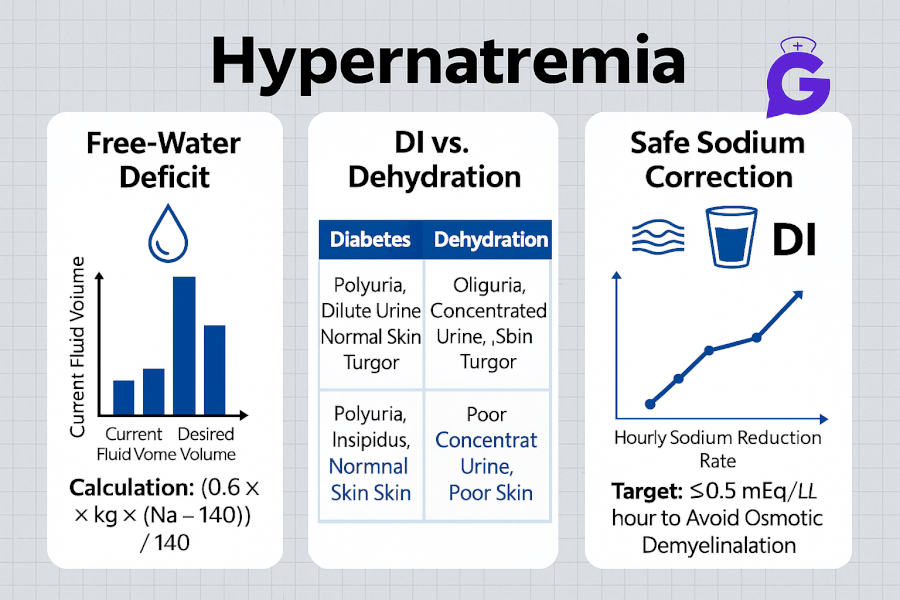(Updated April 2025)
The NCLEX exam is not just a test of memory—it's a test of critical thinking, clinical reasoning, and decision-making under pressure. Whether you're taking the NCLEX-RN or NCLEX-PN in 2025, understanding the various types of questions you'll face is key to walking in confident and walking out licensed.
In this comprehensive guide, we’ll break down the 8 most common NCLEX question formats, complete with examples, strategies, study tips, common mistakes, and real-life scenarios. We'll also link to more in-depth articles from GoodNurse.com that can help boost your confidence and accuracy.
🟦 Multiple-Choice Questions (MCQs)
Multiple-choice questions are the foundation of the NCLEX. You'll be given a stem (the main question or clinical scenario) and four answer options. Only one answer is correct.
Example:
A nurse is caring for a client with pneumonia. Which finding indicates a need for immediate intervention?
A) Oxygen saturation of 94%
B) Temperature of 100.9°F
C) Respiratory rate of 28/min
D) Use of accessory muscles while breathing ✅
Strategy:
- Read the stem carefully.
- Eliminate obviously wrong choices first.
- Look for keywords: first, best, priority.
Common Mistake:
- Rushing through the question and missing key words like not, initial, or most appropriate.
Real-World Scenario:
In clinical practice, nurses are constantly asked to prioritize—MCQs test your ability to do that efficiently, especially when resources or time are limited.
✅ Select All That Apply (SATA)
SATA, or multiple-response questions, require you to choose all correct answers. There may be two, three, all correct—or none at all.
Example:
Which of the following are signs of hypoglycemia? (Select all that apply)
A) Diaphoresis ✅
B) Confusion ✅
C) Bradycardia ❌
D) Hunger ✅
E) Dry skin ❌
Strategy:
- Treat each answer as a true/false.
- Avoid choosing answers just because they sound familiar.
- Know your must-know symptom clusters.
Common Mistake:
- Guessing too many answers. Overselecting is as risky as underselecting.
Real-World Scenario:
When assessing a patient, you rarely make decisions based on a single symptom. SATA mimics real-life where nurses must recognize patterns in symptoms.
📘 Related: 50 Must-Know Nursing Terms for the NCLEX
🔢 Ordered-Response Questions
These require you to put actions in the correct sequence. Often, you’ll prioritize steps for procedures, assessments, or care plans.
Example:
Place the following actions in order for donning PPE:
- Gloves
- Mask
- Gown
- Goggles
Correct Order: Gown → Mask → Goggles → Gloves ✅
Strategy:
- Visualize yourself performing the task.
- Prioritize safety and infection control.
Common Mistake:
- Memorizing lists instead of understanding the reasoning behind the order.
Real-World Scenario:
In an isolation room, donning PPE in the wrong order can lead to contamination and patient harm.
📍 Hot Spot Questions
Hot spot questions present an image—usually an anatomical diagram, medication label, or equipment layout—and ask you to click a specific area.
Example:
Click the site for administering a deltoid IM injection on this diagram of the arm.
Strategy:
- Study landmark-based injection sites, anatomy, and wound care visuals.
- Practice with interactive review tools.
Common Mistake:
- Confusing injection sites (e.g., deltoid vs. ventrogluteal).
Real-World Scenario:
Choosing the wrong injection site could result in nerve damage or ineffective delivery of medication.
✍️ Fill-in-the-Blank (Calculation) Questions
These require you to enter a numeric value—commonly used for med dosage calculations, IV flow rates, or intake/output.
Example:
A patient is prescribed 1,000 mL of 0.9% NS over 8 hours. What is the flow rate in mL/hr?
Answer: 125 mL/hr ✅
Strategy:
- Know your dimensional analysis or ratio method.
- Always double-check for units and rounding rules.
Common Mistake:
- Misplacing a decimal point or misreading the question.
Real-World Scenario:
A dosage miscalculation in pediatrics or ICU can cause serious patient harm. These questions mirror the high-stakes accuracy expected of nurses.
📘 Related: Pharmacology Mnemonics
🔊 Audio Questions
These ask you to listen to a sound—like breath sounds, heart tones, or patient reports—and then choose the best answer.
Example:
Listen to the audio clip. What is the most appropriate action? (Clip: wheezing heard on expiration)
A) Administer albuterol ✅
B) Call the provider
C) Encourage oral fluids
D) Elevate the legs
Strategy:
- Learn to distinguish crackles vs. wheezing vs. stridor.
- Use NCLEX audio review tools to practice!
Common Mistake:
- Ignoring timing of sounds (inspiration vs. expiration) or failing to match sound to the condition.
Real-World Scenario:
In the ER or a code situation, recognizing breath sounds quickly can be life-saving.
🎥 Video Case Studies (Next Gen NCLEX)
With the Next Generation NCLEX (NGN), case-based formats are more common. You'll watch a short clinical video and answer follow-up questions—SATA, prioritization, or matrix/grid.
Example:
Watch a nurse perform a dressing change. Then answer:
Which action requires follow-up?
A) Donning clean gloves before beginning
B) Not performing hand hygiene after ✅
Strategy:
- Know nursing protocols and infection control cold.
- Watch videos with rationales to build context.
Common Mistake:
- Focusing only on major steps and missing subtle errors like hygiene lapses.
Real-World Scenario:
NGN cases reflect clinical handoffs and patient safety reviews—where a small error could be missed if you're not thorough.
📘 Related: Secrets to Success on the NCLEX
📊 Matrix/Grid Format
These appear mostly in Next Gen NCLEX cases, asking you to evaluate multiple responses for multiple criteria.
Example:
Evaluate each medication for these criteria:
Medication Appropriate Requires Clarification Metoprolol ✅ ❌ Lisinopril ❌ ✅
Strategy:
- Stay calm. These look busy but are just SATA in a table.
- Read rows individually, not horizontally.
Common Mistake:
- Skimming horizontally instead of reviewing line by line.
Real-World Scenario:
Matrix questions mimic nursing documentation—where one charting error across multiple columns can lead to medical mismanagement.
Summary Table: NCLEX Question Types & Icons
| Type | Format | Tests | Icon |
|---|---|---|---|
| Multiple Choice | Choose 1 answer | Clinical knowledge | 🟦 |
| Select All That Apply | Choose all correct responses | Critical thinking | ✅ |
| Ordered Response | Drag & drop in order | Prioritization & sequencing | 🔢 |
| Fill-in-the-Blank | Enter numerical value | Dosage calculations | ✍️ |
| Hot Spot | Click correct image region | Visual/clinical recognition | 📍 |
| Audio Questions | Listen and identify | Assessment interpretation | 🔊 |
| Video Case Studies | Watch and respond | Clinical decision-making | 🎥 |
| Matrix/Grid | Multiple inputs per row | Multi-factor evaluation | 📊 |
Final Thoughts: How to Master These Question Types
- Use NCLEX practice platforms with Next Gen-style questions
- Study one question format per day to build confidence
- Focus on rationales, not just right answers
- Use visuals, videos, and simulation to practice hot spot & audio formats
- Learn from mistakes now, not on exam day
More NCLEX Prep from GoodNurse:
📘 Looking for even more? Visit GoodNurse.com to explore our free articles, study guides, and AI-powered NCLEX question tools.







